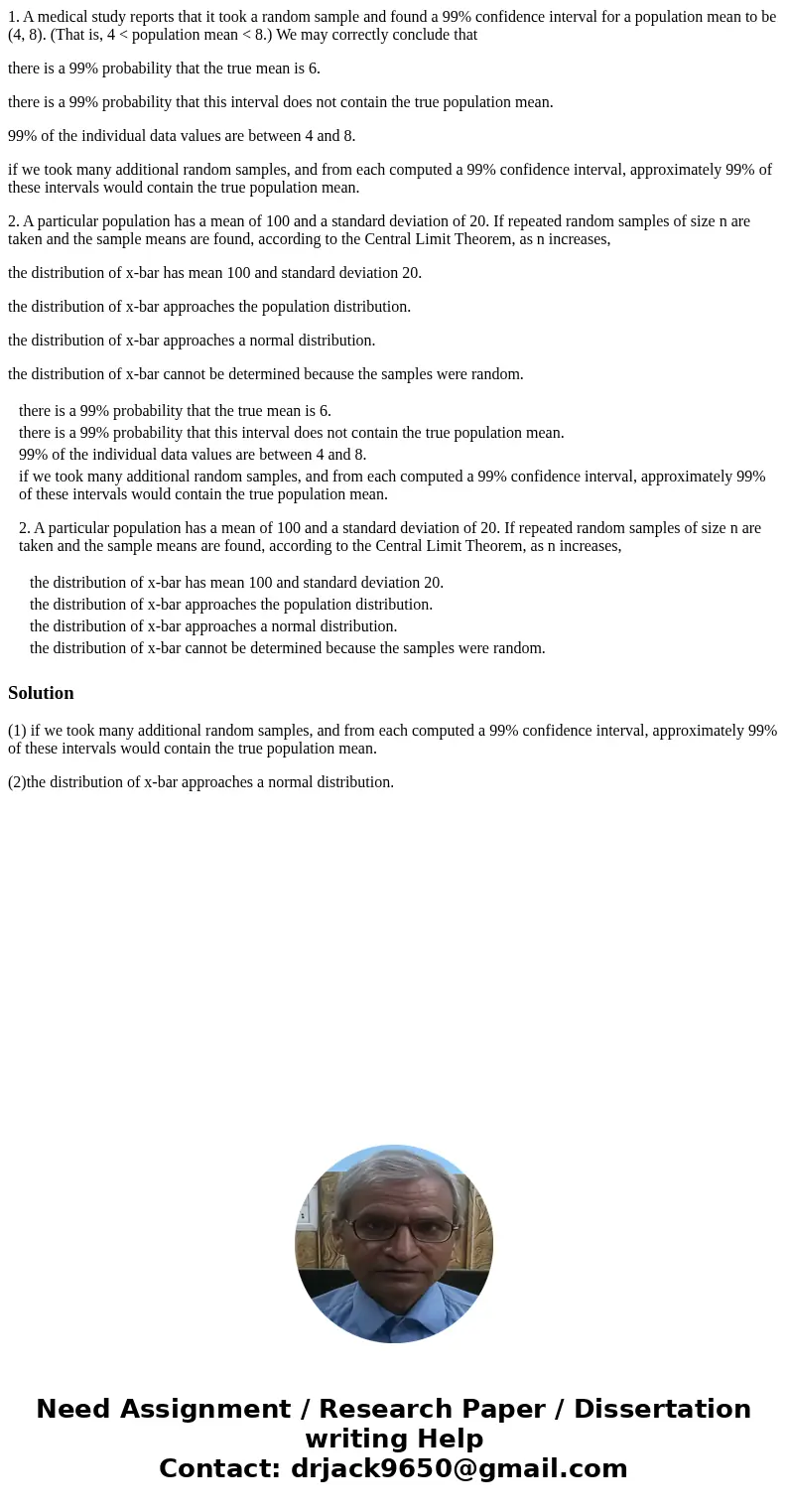1 A medical study reports that it took a random sample and f
1. A medical study reports that it took a random sample and found a 99% confidence interval for a population mean to be (4, 8). (That is, 4 < population mean < 8.) We may correctly conclude that
there is a 99% probability that the true mean is 6.
there is a 99% probability that this interval does not contain the true population mean.
99% of the individual data values are between 4 and 8.
if we took many additional random samples, and from each computed a 99% confidence interval, approximately 99% of these intervals would contain the true population mean.
2. A particular population has a mean of 100 and a standard deviation of 20. If repeated random samples of size n are taken and the sample means are found, according to the Central Limit Theorem, as n increases,
the distribution of x-bar has mean 100 and standard deviation 20.
the distribution of x-bar approaches the population distribution.
the distribution of x-bar approaches a normal distribution.
the distribution of x-bar cannot be determined because the samples were random.
| there is a 99% probability that the true mean is 6. | ||||||||||||||
| there is a 99% probability that this interval does not contain the true population mean. | ||||||||||||||
| 99% of the individual data values are between 4 and 8. | ||||||||||||||
| if we took many additional random samples, and from each computed a 99% confidence interval, approximately 99% of these intervals would contain the true population mean. 2. A particular population has a mean of 100 and a standard deviation of 20. If repeated random samples of size n are taken and the sample means are found, according to the Central Limit Theorem, as n increases,
|
Solution
(1) if we took many additional random samples, and from each computed a 99% confidence interval, approximately 99% of these intervals would contain the true population mean.
(2)the distribution of x-bar approaches a normal distribution.

 Homework Sourse
Homework Sourse